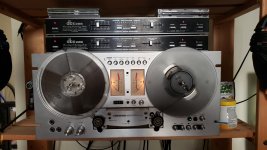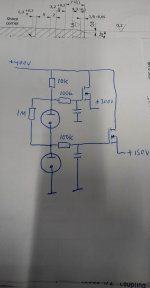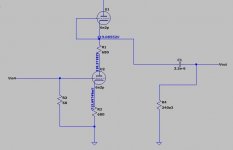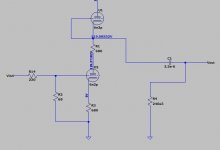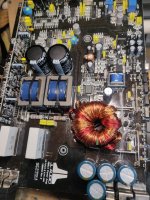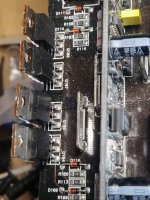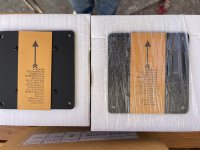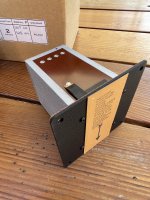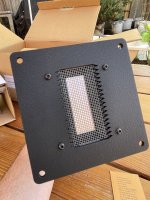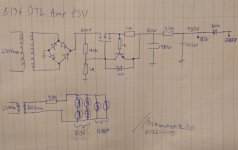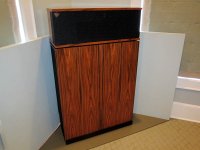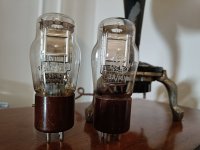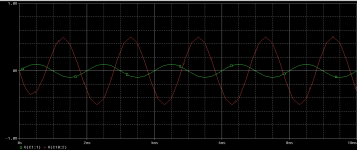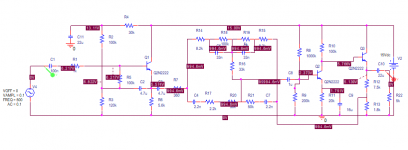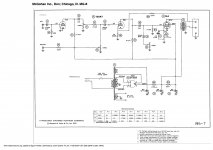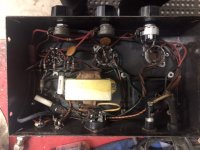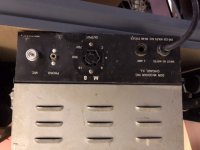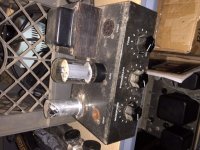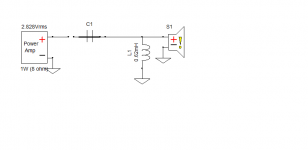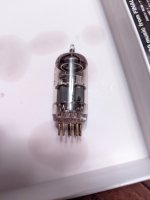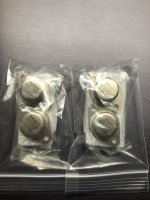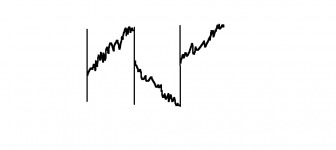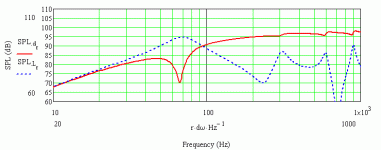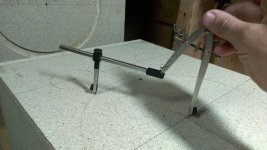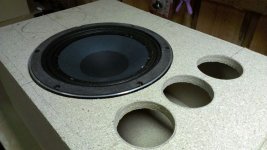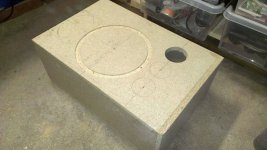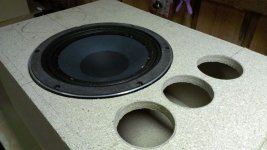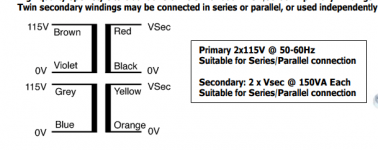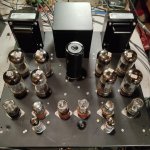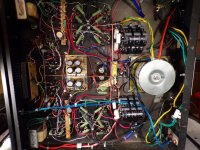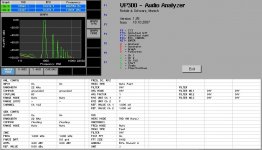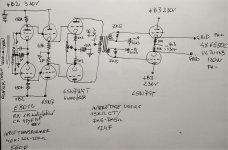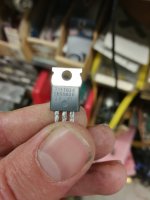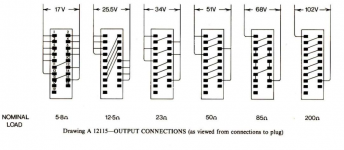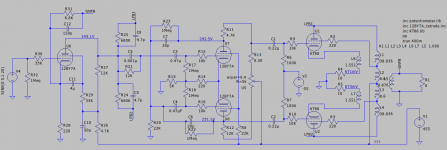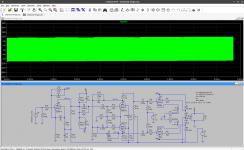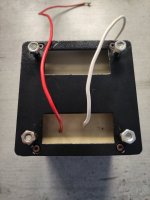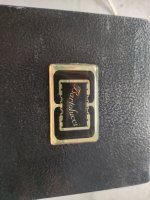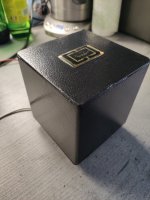This Frequently-Asked Questions (FAQ) list discusses corner-horn loudspeaker imaging, how to achieve outstanding imaging, and typically encountered issues with corner horn imaging.
Several manufacturers currently make or have made corner-horn designs: the Klipschorn and the Klipsch Jubilee, Voigt, Vitavox, ElectroVoice, JBL, and smaller companies like Pi and Decware, etc. Additionally, there are DIY corner horn designs that exist.
"Can I get Outstanding Imaging from a Corner-Horn Speaker?"
Yes. Good corner-horn imaging can be unsurpassed, in fact surpassing the imaging performance of dipole and bipole radiating loudspeakers in terms of accurate and detailed reproduction of the source music material.
"What are the Advantages of Corner Horns?"
A corner horn is designed to be used in a corner of a room or outside structure such as an outdoor stage backstop to significantly reduce the size of the loudspeaker bass bin for reproducing the lowest audible frequencies. While corner horns are not new, they are not often seen in today's audiophile circles.
Many misconceptions about corner horn acoustic performance and their proper setup exist:
- They provide dramatically lower bass distortion, in particular, modulation distortion, than non-corner-loaded loudspeakers. Bass modulation distortion has been found to be quite audible.
- They provide much greater low frequency dynamic range without resultant woofer compression or other forms of distortion, which limits achievable sound reproduction fidelity of other types of speakers
- They have the potential to achieve full range controlled directivity in-room if designed/produced carefully
"What are the Disadvantages of Corner Horns?"
- They require good room corners to fully achieve their low frequency response, or a large footprint in order to accommodate bass bin extensions to achieve their lowest octave of low frequency performance
- They are physically large and heavy speakers if they are to reproduce all needed low frequencies (e.g., piano, organ, string bass, etc.)
- They require amplifiers of high quality for the critical "first watt" of input power to achieve full potential
- They require careful placement of near-field objects and/or acoustic near-field treatments in room in order achieve their full imaging potential
"What is Different About Corner-Horn Imaging?"
Corner-horn imaging performance is a strong function of the room they're in, i.e.,
- The room's absolute and relative dimensions, its shape (including the ceiling), and the uniformity and relative smoothness of the walls next to the corner horns, i.e., the front and side walls near the speakers out to a distance of at least 4 feet (120 cm)
- The placement of the speakers within the room boundary (e.g., for a Klipschorn, the tailpiece-to-corner fit to seal the two mouths of the bass bins, or the length of the corner extensions from the bass bin on the front and side walls, and avoidance any intrusions into the room by bricks and other architectural details (yes, brick fireplaces and mantles can significantly affect imaging...) or canted low ceilings.
- The absence of near-field furniture or equipment that reflect acoustic energy, and
- The judicious use of acoustic treatments (...it usually doesn't take very much, but it usually takes some).
- The quality of the "first watt" of amplifier power driving them
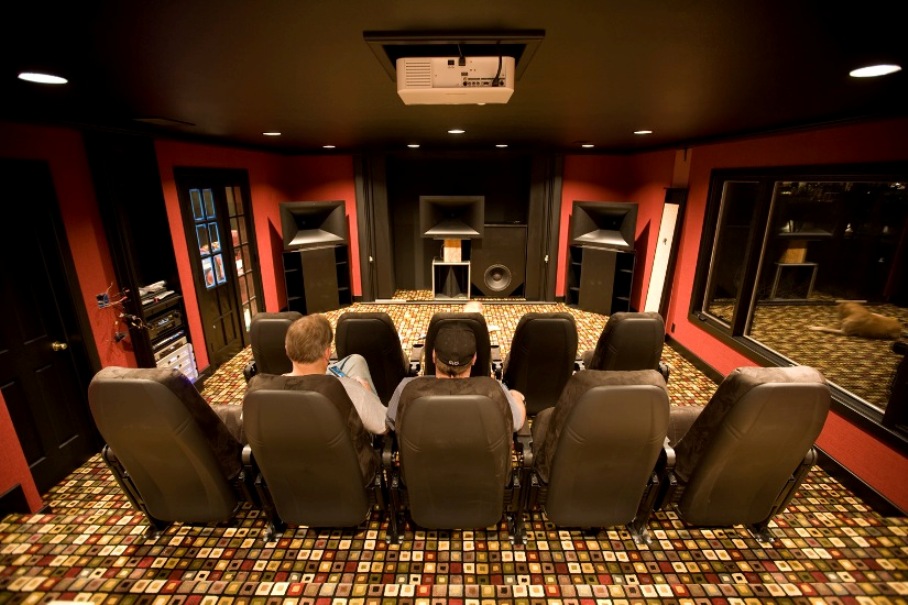
"How Do I Set Up Corner Horns to Increase Their Stereo Imaging Performance?"
One commonly heard complaint from corner horn users is that their speakers seem to have trouble achieving the same imaging performance as free-standing speakers. Loudspeakers of any type except dipole-radiators profit greatly in increased bass performance and much lower bass IMD of their speakers if they are placed in the corners of the room, toed-in to the listening position.
When many owners are polled about where they place their speakers in-room, invariably many answer "along a wall" or "a few feet from the front and side walls". Why would this occur? Paul Klipsch stated:
"The conclusion is pretty obvious. Whether you are using Klipschorn loudspeakers or speakers of some other make or type, you will get best stereo geometry and best tonality with corner placement of the flanking speakers (whether you use a center speaker or not) and the corner placement should be with the flanking speakers toed-in at 45 degrees." (Taken from Dope from Hope, Vol. 15, No.2)
There is something involving room acoustics and corner horns that is critically important to achieving excellent corner-horn imaging. The psychoacoustic effect that comes into play in this is a special case of the
Precedence Effect of listeners called the Haas Effect, and the issue is early reflections of high mid-bass and midrange frequencies (i.e., about 250-4000 Hz) off the walls of the room closest to corner-horn midrange and high mid-bass horns.
From the co-inventor of the Klipsch Jubilee, Roy Delgado:
"Imaging and creating it by having two varying acoustic signals is an interesting undertaking. I have found that a smooth, unobtrusive boundary between the two speakers works very well with well-behaved and consistent polar patterns [of speakers]. The other thing that I have noticed that works well is no boundaries--like playing the speakers outside. Both do a very good to excellent job of accomplishing the imaging goal, but the caveat is that no boundaries forgives non-consistent polar patterns while a smooth boundary is a strict enforcer of consistent polar patterns. Pretty cool how that happens."
These early reflections should be controlled (i.e., a "Zero Reflection Zone" by P. D'Antonio) in order to achieve much greater imaging performance with speakers in the corners of their rooms.
What is the easiest way to control these early side and front wall reflections? Have a smooth boundary between the speakers (i.e., nothing between the speakers) and smooth front and side walls.
If this is not possible for your room and setup, the next easiest fix is to employ absorption panels. Many companies make fuzzy panels and acoustically absorbing tiles that can easily be placed along side walls and front walls of the your listening room. How much is needed? It turns out from the Haas Effect that controlling early reflections should be considered for 10-20 milliseconds of delayed reflections from side and front walls. This translates into about 11 to 22 feet (3.4-6.8 meters) of total path length at room temperature. However, the first 2-4 ms of early reflections are critical to control, translating to about 2-4 feet (0.6-1.2 m) of significantly reduced reflections. I use about 2 feet (0.6 meters) of absorption at the side-wall exit area of my corner-horn midrange horns.
Depending on your room geometry and listening position in relation to the corner horn placement (i.e., the included angle of the speakers relative to the listener--typically 90+ degrees included angle), the width of the midrange horn acoustic coverage laterally ( typically 60-100 degrees included angle), and assuming that your corner horn midrange horn controls its polar response down to its lower crossover frequency, the area that you should cover with absorption panels could be on the order of 2-10 feet along the front and side walls. I find that 2 feet of absorption along side walls works very well for Klipsch K-402 horns (i.e. Jubilee), and ~7 feet across the front wall, measured from the exit of each midrange horn's mouth.
Another approach is to place diffuser panels along the same near field areas but note that the use of diffusers in the Haas-effect areas will likely not achieve the same level of corner-horn imaging as the use of absorbers. The advantage of using diffusers is the relative liveness or deadness in smaller listening rooms.
If your listening position is more than 11 to 22 feet (3.4-6.8 meters) away, you probably have little work to do. However if you are like me and sit within 10 feet (3 meters) of your corner horns, you will find that the effect of using absorbent panels along the walls very much increases your stereo imaging performance.
"But What About the Equipment/Racks, Architectural Details, and Speaker(s) Between by Corner Horns?"
Again, the most straightforward way to deal with this is to simply remove all objects between the speakers, leaving a smooth wall. If this is not achievable, the alternatives are the same as above. I use absorption tiles on the side and top of my center loudspeaker, on the masonry, and a quilt-based cloth fabrics on other protruding objects like the mantlepiece to control early reflections.
"But What About the Television Between My Speakers?"
This one is easy--place a temporary quilt, comforter, or acoustic absorption tiles in front of the screen when you listen in music only (i.e., no video) mode.
"But What About the Floor Next to My Speakers?"
Something as simple as a thin area carpet around each corner horn or even wall-to-wall carpet will suffice. This carpet does not need to be very thick or fuzzy to be effective.
"But What About the Ceiling?"
If your ceiling is relatively high, you probably don't have a problem. If it is lower than about 9 feet, and especially if you own Klipschorns or other horn-loaded loudspeaker having collapsing polar midrange horns, you should put absorbent material around the top/bottom mouth of the midrange horn or place diffusers/absorbers on the ceiling around your speaker's midrange horn mouth (especially if you sit relatively close to your corner horns). More on this subject later.
"What If the Amount of Absorption Recommended Above Just About Covers My (Small) Listening Room?"
Then you are probably one of those unfortunate corner-horn owners that would greatly benefit by placing your speakers in the corners of a larger room: in particular, Klipschorns require a large room to perform at their best . If perhaps you are using something like Klipsch Jubilees, then you can use them in a smaller room. More on the subject of midrange horns, below.
"Is All This Really Necessary?"
If you are trying to increase your corner-horn imaging performance: the answer is "yes" if you sit within 11 feet (3.4 meters) of your speakers. If you sit further back, then you will probably have far fewer imaging issues.
"What about Amplifiers and Corner-Horn Imaging Performance?"
In order to understand the effects of different type of amplifiers on corner-horn performance, you need to understand the effects of "early reflections", discussed, above, and the treatments available to recover your stereo imaging performance in rooms with cluttered areas between the speakers and non-smooth front and side walls. Once you understand the psychoacoustic effects on imaging of corner-horn speaker midrange horns/drivers, then a productive discussion on amplifier effects can occur.
"What Are the Issues Related to Amplifiers and Corner Horns?"
Amplifiers that exhibit high output impedance have the effect of providing a "reverb effect" in-room, especially if the room is small and relatively live acoustically. What kind of amplifiers have relatively high output impedance? Tube/valve-type amplifiers.
"Why is This an Issue...What is Happening?"
The reverb effect is due to strong room reflections back to the horns/drivers themselves, which are much more efficient than direct-radiator speakers at converting electrical energy into acoustic energy - and back again (...i.e., they are acting like microphones). Klipschorns, for example, convert about 10% or more of their input electrical energy into acoustic energy (according to Paul Klipsch's own calculations and measurements), while cone-type speakers typically are only 0.1% efficient or less. Planar speakers, like electrostatic and Magneplanar-like speakers, are even less efficient.
By the way, the same reverb effect happens with headphones in that sound reflections from the ear's closed-end tube reflect back to the driver, then back into the electrical domain by headphone driver-amplifier coupling. Special thanks to Bob Carver on identifying this phenomenon.
"So Why are We Talking About the Efficiency of Corner Horns and Imaging with Some Tube Amplifiers?"
Because the horns/drivers themselves are 100x more efficient at converting acoustic reflected energy back into electric energy to your amplifier's output terminals than direct radiator loudspeakers are, some of the room's reflected acoustic energy goes right back to the amplifier's output terminals.
"So What's the Issue with Amplifiers and Horn-Loaded Loudspeakers?"
Nothing, as long as the amplifier has low output impedance, a.k.a., high damping factor, like virtually all SS amplifiers and most higher-forward-gain tube amplifiers with feedback--such as multistage push-pull designs.
But if your amplifier has relatively high output impedance, that is, amplifiers with zero feedback, SET-type tube amplifiers, and particularly output-transformerless (OTL) types, what happens is that the amplifier output stage "feels" the reflected acoustic energy as an added load and the amplifier attempts to push back against midrange and bass bin driver diaphragms, albeit this effect is delayed in time from the original signal due to the reflected energy delays in-room. The net result is a reverb effect that is sensitive to SPL coming back to your corner horns from the room.
"So What's Wrong With That?"
Well, for starters, it's artificial and you can't turn it off unless switching to a lower output impedance amplifier, or switch to a much larger listening room with high ceilings. Paul Klipsch talked about measuring speakers with a "rubber yardstick" when you start to depart from a live music reproduction standard. [See also the article
"Euphonic Distortion: Naughty but Nice".] That conversation is apropos here. If accurate reproduction is the standard by which Klipsch designed and built his speakers, then amplifiers with high-output-impedance used with very efficient corner horns in corners, where the reflected acoustic waves tend to have the highest amplitude and tends to pile up, will lead to distortion - non-harmonic distortion - the worst kind.
"So Why Do So Many Corner-Horn Owners Use Tube Electronics That Have High Output Impedance?"
I believe you can answer that question yourself now. Another way to achieve the same effect is to place a reverb unit in front of your amplifier input terminals - at least you can turn it off when you get tired of it.
"So What Other Issues Are There With SET Tube-Type Amplifiers?"
Low power SET-type tube amplifiers usually have too little amplifier power headroom--even for 105 dB/W-M corner horns thus leading to fast-transient soft clipping that some tube enthusiasts apparently like. Paul Klipsch's "rubber yardstick" comments are apropos here, too: it's preferable to not have any clipping effects at all if we are to retain an accurate sound reproduction yardstick. Also, SET amplifiers exhibit a much larger amount of harmonic distortion, that is, even harmonics. It is preferable to not have these harmonics added to our stereo's output since the magnitude of harmonic distortion is an indicator of the magnitude of amplitude modulation distortion (AMD) being generated, which is non-harmonic and very detrimental to the quality of sound reproduction.
[/URL]
"Soft Clipping" of Tube Amplifiers that Masks Their Clipping Distortion but Introduces Harmonic Distortion
"So Why Do Class 'A' Tube-Type Amplifiers Sound So Good With Corner Horns?"
Multistage amplifiers, the type that is commonly used in SS amplifier designs (it's easy to get large amounts of amplifier gain)
have more of something known as higher order harmonic distortion (which is synonymous with higher order harmonics) than do single stage or dual-stage amplifiers using little or no feedback.
Also the use of feedback to control these multiple cascaded amplifier stages tend to convert otherwise low-order harmonic distortions into higher order harmonics unless relatively large amounts of feedback are used.
But using large amounts of feedback negates the use of multistage amplifiers because it reduces the overall gain of the amplifiers in series. So typical SS push-pull, or even some class A amplifiers typically have much more higher-order harmonic distortion than do single- and dual-stage amplifiers running with no feedback.
